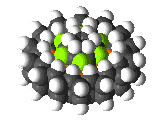Graphene Nano Sensors and Electronic Guidance Above Graphene Particles in (Nano Sensors) Based on Nano- Micro-Electronic PHD (Educational-Research PhD)
Researcher and author PhD student : Afshin Rashid
Note: The unique electronic properties and structure of carbon nanotubes, such as recycled nanotubes, graphene and graphene oxide, are used to make nanosensors.
In nanosensors, the interaction of electron nanoparticles with graphene is absorbed, which changes the electrical conductivity at the surface of graphene nanosensors. Absorption of small amounts of nanoelectrons with very low molecular weight movement has changed the resistance of nano-graphene , which is proportional to the concentration in the nano-graphene sensors. Different molecular conditions cause different changes in graphene resistance, which often affects the electron or electrophoresis of graphene at the nanoscale . Because the noise level in graphene is low. Limitations of identification with these nanostructures are higher and less sensitive . The repeatability of these nanostructures in sensor production is less than graphene and carbon nanotubes.
Graphene sensors with nanotechnology offer new solutions in the field of physical, chemical and biological measurement that increase sensitivity in diagnosis, feature, multiplication and portability for different types of assessments, safety and environmental . If there is a need for carbon nanotubes or pure graphene to build the sensor, the CVD growth method is the best choice. Making nanotubes and carbon nanotubes with metals or metal oxides is a practical way to increase sensitivity and minimize side effects . Various properties of carbon nanotubes, such as increased interaction with large molecules, can increase the efficiency of graphene nanofibers , as well as noise levels. Reduces graphene nanoparticles and increases the sensitivity of the sensor to low values of the target molecule.
Conclusion :
The unique electronic properties and structure of carbon nanotubes, such as recycled nanotubes, graphene and graphene oxide, are used to make nanosensors.
Author: PhD Student ( Afshin Rashid)




